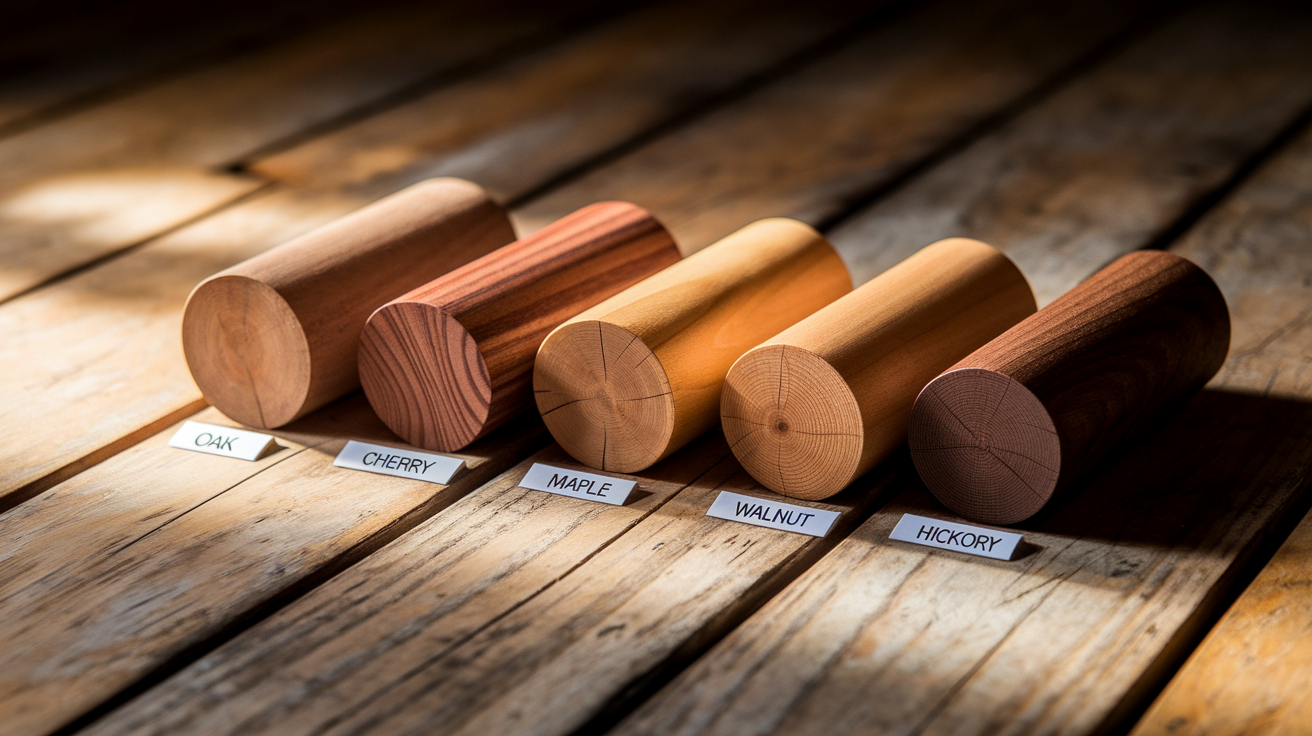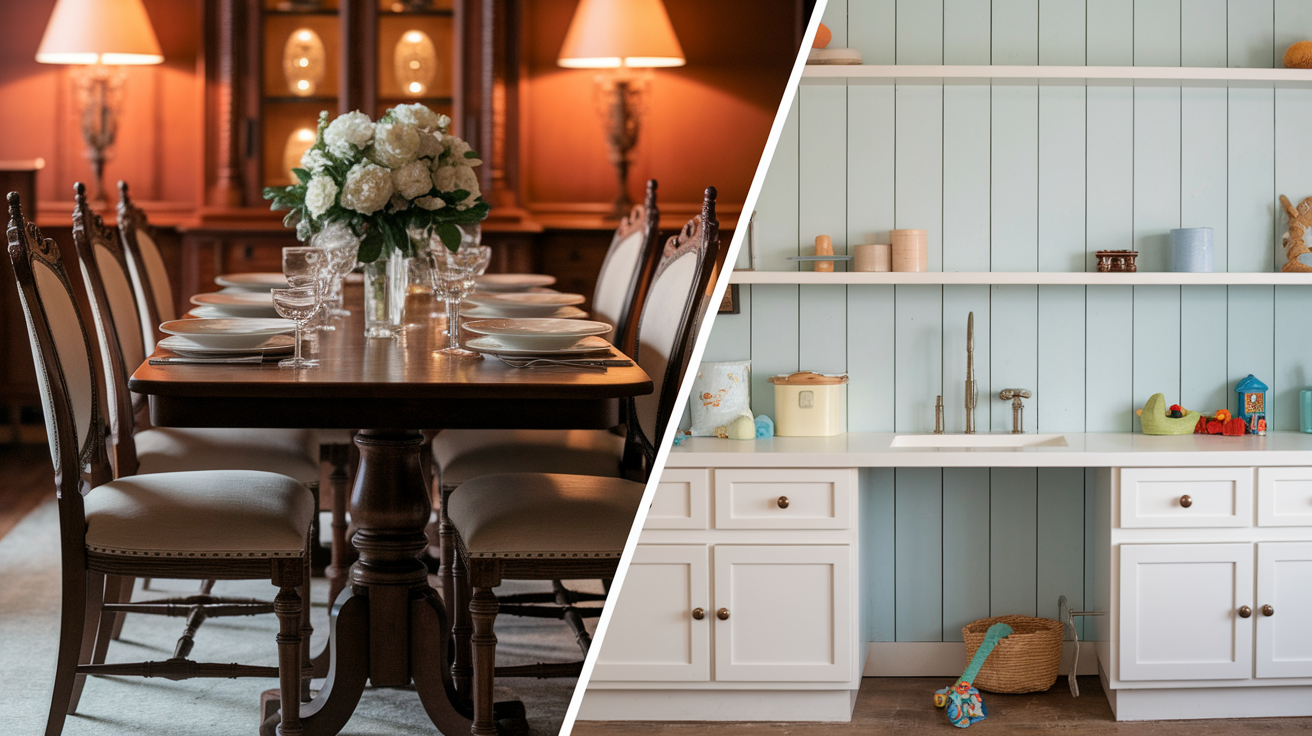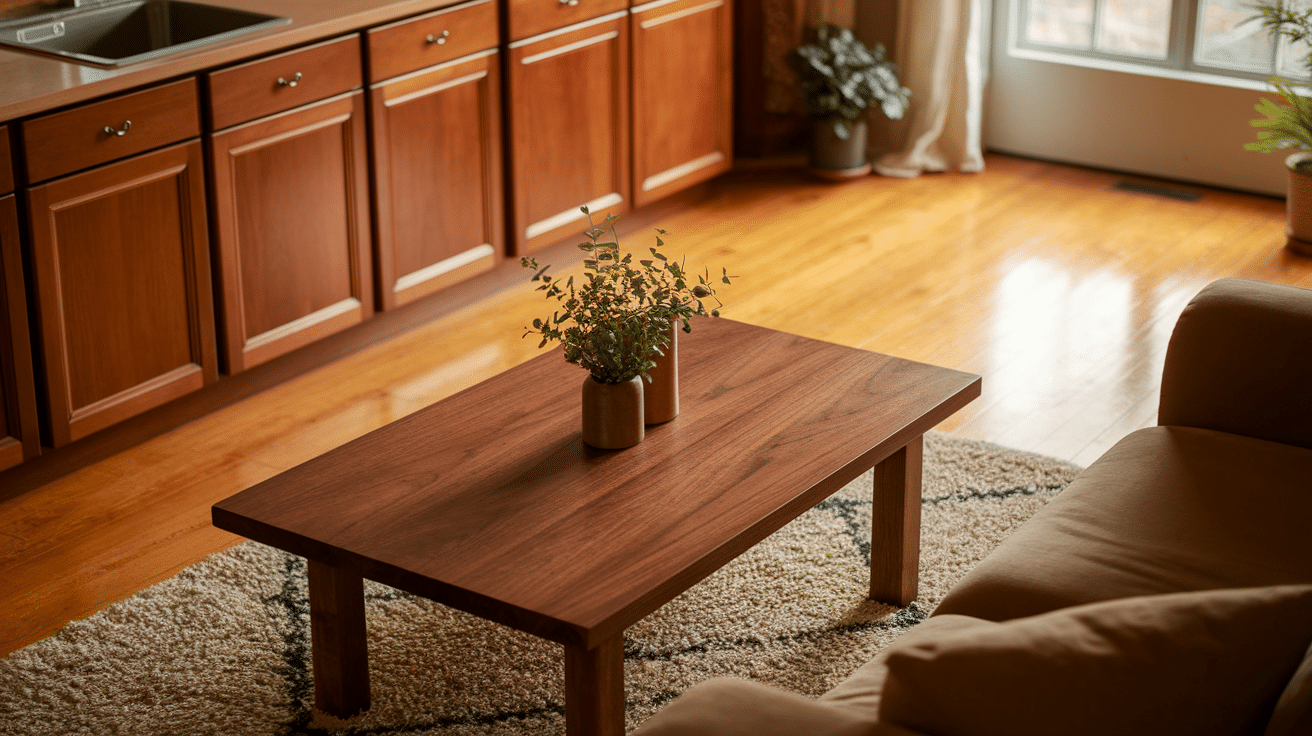- What is Stain Grade Wood?
- What Makes Wood “Stain Grade”?
- Types of Trees and Wood that are Considered Stain Grade
- Stain Grade Wood vs. Paint Grade Wood: A Side-by-Side Comparison
- Examples of Wood Types and Design Styles
- How to Choose Between Stain Grade and Paint Grade Wood
- Maintenance Tips for Stain Grade Wood
- Finish Options for Stain Grade Wood
- Conclusion
When your hands run across beautiful wood furniture, you’re likely feeling stain-grade wood. This premium lumber is your secret weapon for creating home projects that guests can’t stop admiring.
Stain-grade wood features consistent grain patterns, minimal knots, and a natural character that pops when finished with clear stains. Your cabinets, dining tables, and floors deserve this quality wood that showcases nature’s artistry.
While your budget might prefer paint-grade options for some projects, stain-grade wood is what transforms ordinary rooms into spaces with warmth and personality.
This guide reveals what makes stain grade wood special, where it belongs in your home, and how to decide when it’s worth the extra cost for your next weekend project.
What is Stain Grade Wood?
Stain grade wood is lumber chosen for its nice appearance when clear finishes or stains are applied to it. This type of wood has few marks or flaws, letting the natural grain patterns show through.
People use stain-grade wood for items they want to look nice, like kitchen cabinets, fancy doors, and good furniture.
The wood needs to look clean and smooth for the stain to work well. If the wood has too many spots or marks, the stain won’t look even when it’s done.
That’s why carpenters and woodworkers pick out the best pieces for projects where the wood will be seen.
What Makes Wood “Stain Grade”?
Wood gets called “Stain Grade ” when it meets certain quality rules. It should have clear, even grain patterns without odd marks or big knots. The wood should be smooth and have a uniform color throughout.
Good stain grade wood takes stain evenly without spotty areas. The surface needs to be sanded well so the finish looks good. Wood with fewer flaws costs more, but the results are worth it when you want to showcase the natural beauty of the wood.
The grain pattern is crucial for determining the stain grade of wood. Straight, even grain takes stain better than wild or uneven grain. The wood color should also be steady throughout each piece.
Types of Trees and Wood that are Considered Stain Grade

Not all woods are created equal when it comes to taking stain. These popular woods are known for their beauty when finished with clear coats or stains.
- Oak: Strong grain patterns that pop with stain; red oak is common, while white oak offers better water resistance
- Cherry: Develops rich red-brown tones over time; softer than oak but durable enough for most home uses
- Maple: Light colored with fine grain; requires careful selection as it can be tricky to stain evenly.
- Walnut: Naturally dark wood that needs minimal staining; more costly but delivers a premium appearance
- Hickory: Features bold grain patterns ideal for rustic styles; extremely hard and durable for high-traffic areas
Stain Grade Wood vs. Paint Grade Wood: A Side-by-Side Comparison

When your DIY project is on the line, knowing the key differences between wood types saves time, money, and frustration. Here’s what sets stain-grade wood apart from paint-grade options in ways that matter for your next build.
| Feature | Stain Grade Wood | Paint Grade Wood |
|---|---|---|
| Appearance | Clear, consistent grain with minimal knots or blemishes | May have visible knots, mineral streaks, or minor defects |
| Key Difference | Selected to showcase natural beauty | Chosen for coverage, not appearance |
| Cost | More expensive due to higher quality | 30–50% cheaper than stain grade options |
| Budget Impact | Premium look with a higher price tag | More cost-effective for large surface areas |
| Typical Uses | Cabinets, furniture, mantels, stair treads | Baseboards, crown molding, casings, shelving |
| Selection Tip | Best where wood’s natural look is important | Ideal when wood will be painted over |
| Durability | Typically hardwood resists dents and wear | Often softwood or composite, less resistant to damage |
| Longevity | Better long-term resistance | May wear faster in high-use areas |
| Maintenance | Shows scratches more, but can be repaired easily | Easier to touch up; paint may chip |
| Long-term Care | Requires spot repairs to maintain the look | Needs repainting over time for upkeep |
Examples of Wood Types and Design Styles

Looking at specific examples helps you visualize the right wood for your project. Here’s how different woods typically appear in home design.
Stain Grade Wood Examples
Stain grade lumber shines when you want the natural beauty of wood to take center stage. Oak flooring is a classic choice with its clear, pronounced grain patterns that look stunning under a protective finish.
Cherry cabinet doors bring warmth to any kitchen with their rich, reddish color that deepens over time and becomes a natural focal point. Walnut furniture pieces showcase deep, chocolate-brown tones with flowing grain that works perfectly in traditional and rustic designs.
Maple tabletops offer a lighter option with subtle, clean grain patterns that complement contemporary spaces without overwhelming the room’s other elements.
Paint Grade Wood Examples
Paint-grade lumber is a cost-effective choice, especially when the wood will be completely covered.
Pine baseboards are a go-to choice for most builders since any knots or imperfections disappear under a coat of white paint, giving you clean, professional-looking trim.
MDF bookcase shelves provide a smooth, affordable surface that takes paint beautifully and won’t show brush marks. Poplar works well for cabinet frames because it’s cost-effective and holds paint nicely, even though the raw wood might have some color variation.
Alder door panels are another smart pick when you’re painting – the wood might be knotty or have some character marks, but once you apply a few coats of paint, those imperfections completely vanish.
How to Choose Between Stain Grade and Paint Grade Wood
When you’re standing in the lumber aisle trying to decide between wood grades, the choice comes down to a few key factors.
Choose stain grade lumber when people will actually see the wood grain. There’s no point paying extra for beauty that gets hidden under paint. Main pieces in your room, like built-in bookcases or kitchen islands, deserve higher quality since they’re focal points that guests will notice.
Consider how long your project will need to last as well. A quick weekend fix might work fine with paint grade, but furniture or cabinets you want to keep for decades benefit from the durability of stain-grade hardwoods.
Your budget matters, and mixing wood types is a smart way to get the best of both worlds; use stain-grade where it’s visible and paint-grade where it’s not.
High-traffic areas, such as floors, stairs, and heavily used furniture, perform better with harder stain grade woods that can withstand daily wear and tear without showing damage.
Maintenance Tips for Stain Grade Wood

Keeping your stain-grade wood looking its best takes some care. Follow these simple tips:
- Clean gently: Use a soft, damp cloth with mild soap when needed, avoiding harsh chemicals that can damage the finish.
- Dust regularly: Wipe down surfaces with a microfiber cloth to prevent scratches from built-up dirt and debris.
- Polish periodically: Apply furniture polish or wood conditioner every 3-6 months to keep the wood nourished and protected.
- Touch up scratches: Fix small scratches immediately with touch-up markers made specifically for your wood tone.
- Refresh the finish: Reapply a thin coat of finish every few years on heavy-use surfaces like tabletops and counters.
- Protect from the sun: Keep stain-grade wood out of direct sunlight to prevent fading and color changes over time.
- Use protection: Place coasters and mats on tabletops to prevent water rings and heat damage from dishes and drinks.
Finish Options for Stain Grade Wood
The finish you select is just as important as the wood itself. A quality finish protects your stain-grade wood while enhancing its natural beauty.
The right choice brings out grain patterns, adds depth to the color, and creates the perfect sheen for your space. Different finishes offer varying levels of protection and visual appeal.
- Oil-based finishes (like tung oil) soak into the wood and give a natural, low-sheen look.
- Water-based finishes dry faster and have less odor, making them suitable for indoor projects.
- Polyurethane creates a hard, protective layer that works well for tables and floors.
- Shellac gives a warm glow to wood and works well on furniture pieces
- Danish oil offers a middle ground between pure oil and surface finishes
Taking time to choose the right finish ensures your stain wood will look its best for years to come.
Conclusion
Your home tells your story, and the wood you choose plays a starring role in that tale. Stain-grade wood brings natural warmth and character that can’t be replicated with paint.
When your hands glide across your custom-built bookshelf or dining table, that connection to nature comes from choosing the right wood from the start.
The unique grain patterns, rich color variations, and natural feel make stain-grade wood worth the extra cost.
While paint-grade wood has its place, saving money where beauty stays hidden, the stain-grade pieces become the family heirlooms and conversation starters.
What wood project are you planning next? Share your ideas in the comments below! Other readers might have tips for your specific wood choice or finishing techniques.

